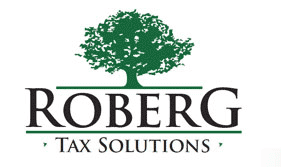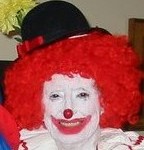![honus_wagner_t206_canadacardworld2[1] Honus Wagner Baseball Card](http://robergtaxsolutions.com/wp-content/uploads/2010/12/honus_wagner_t206_canadacardworld21-150x150.jpg)
Honus Wagner Baseball Card sold for $262,000
If you’ve seen some of my other blog posts, you may have noticed some of my articles about hobbies and businesses. Most of the time, people know if they own a business or not, but sometimes the category gets a little blurry. Like the other day, I was reading a message board by a fellow you sold his baseball cards on E-Bay. In his case, he only sells about $50 worth of cards a year, definitely a hobby, not a business at this point. But he was thinking about increasing his sales and crossing out of the “hobby” mode and into the “business” mode.
Now I have all sorts of advice about moving from a hobby to a business, but in this case, things might be a little different. The reason I say that is because baseball cards are collector’s items. It kind of depends what level the gentleman is at. You can buy cards and sell them at retail of course, that would be a regular business. But there are also the folks that buy and trade “collectibles”. The recent auction price of a Honus Wagner card for $262,000 gives you a clue as to what I’m talking about.
If your business or hobby involves selling collectible items, such as art, guns, coins, stamps, and things like that, you might be reporting your income on a schedule D form. The same form that you use to report gains and losses from the sale of stocks, bonds, and mutual funds.
I like reporting income that way because of the tax advantage, there’s no self employment tax and if you sell an item that you’ve held for over a year then you’re also taxed at the lower capital gains tax rate. The downside to reporting this way is that you get no loss deduction for the sale of “capital assets held for personal use.”
There could be three possible ways to report the same income for a “hobby/business/capital gain” sale. For example: Let’s say you purchase a painting for $1,000. You keep it in your living room for a few years and then you sell the painting for $2,000. If you report the income as a hobby: $2,000 goes on line 21 of your 1040 and you might be able to claim the $1000 you paid for the painting as a deduction on your Schedule A, (but because of the other rules involved, most like you won’t get to deduct that at all.) If you’re in the 25% tax bracket, you’ll pay $500 more in income tax. If you report the $2,000 as self employment income on Schedule C, you can deduct the $1000 as an inventory expense leaving you with a profit of $1,000. Taxed at 25%, that’s $250. Add to that the 15% self employment tax which adds another $150 making your tax bill $400. As a sale of a capital asset, you report on schedule D the income of $2,000, the basis of $1,000 with a taxable long term capital gain of $1,000 which will be taxed at the capital gain rate of 15% costing you $150 of tax money. In this example, I know I’d want to use the capital gain.
Of course, there are other rules and issues you have to consider when determining if an activity is a hobby or business or collection, but the example above does let you see some of the differences in how you might want to structure your business/hobby/collection.
I’d have to ask the baseball card fellow some more questions about his business plan to determine exactly what category I’d place him in. But with some collectors, it’s pretty obvious that you’d want to classify their collecting income as capital gain and not self employment.
 If you’re a parent and you use a babysitter or daycare provider to care for your child while you are at work, that’s a deductible expense. In general, both parents must work, or one must be disabled or in college in order to qualify. But did you know that hiring a babysitter to care for your child while you are performing charity work counts as a charitable donation? I didn’t until recently. In fact, if you read the IRS regulations, it’s pretty clear that it’s not allowed.
If you’re a parent and you use a babysitter or daycare provider to care for your child while you are at work, that’s a deductible expense. In general, both parents must work, or one must be disabled or in college in order to qualify. But did you know that hiring a babysitter to care for your child while you are performing charity work counts as a charitable donation? I didn’t until recently. In fact, if you read the IRS regulations, it’s pretty clear that it’s not allowed.
![honus_wagner_t206_canadacardworld2[1] Honus Wagner Baseball Card](http://robergtaxsolutions.com/wp-content/uploads/2010/12/honus_wagner_t206_canadacardworld21-150x150.jpg)





![4284120074_94cebe4f72_m[1] Payroll check stub](http://robergtaxsolutions.com/wp-content/uploads/2011/02/4284120074_94cebe4f72_m1-150x150.jpg)
![Emma250x200[1]](http://robergtaxsolutions.com/wp-content/uploads/2011/02/Emma250x2001-150x150.jpg)